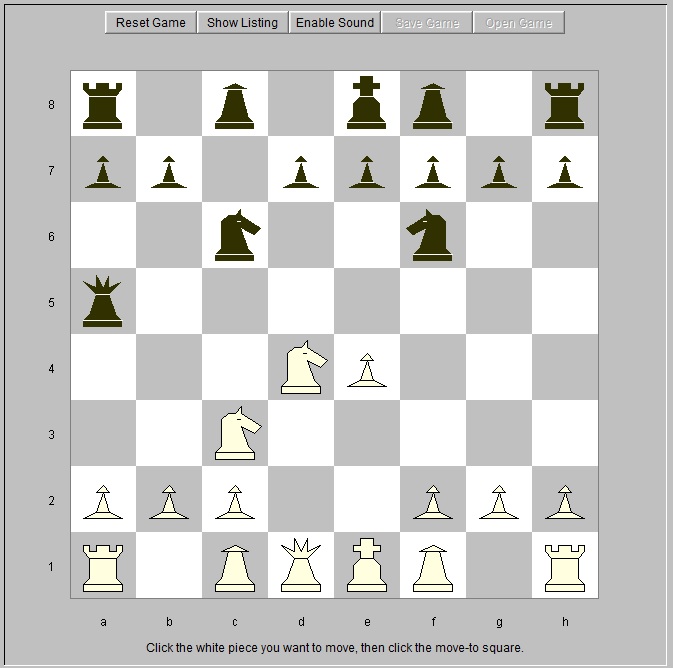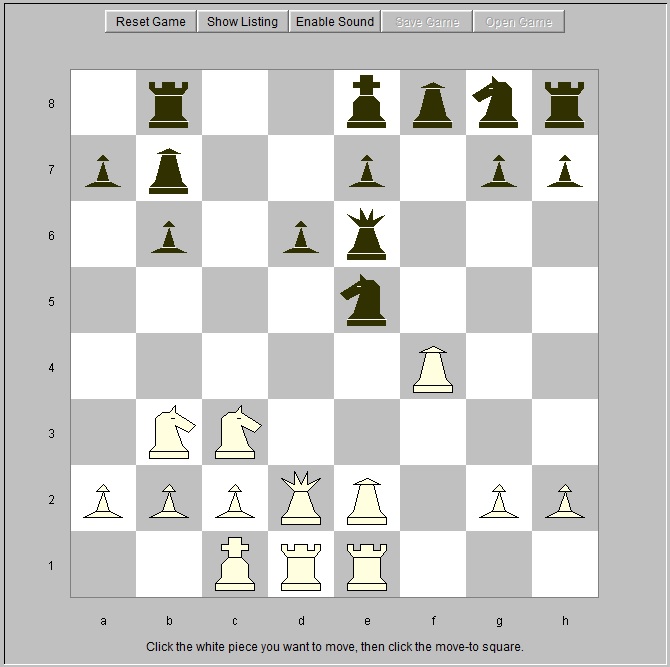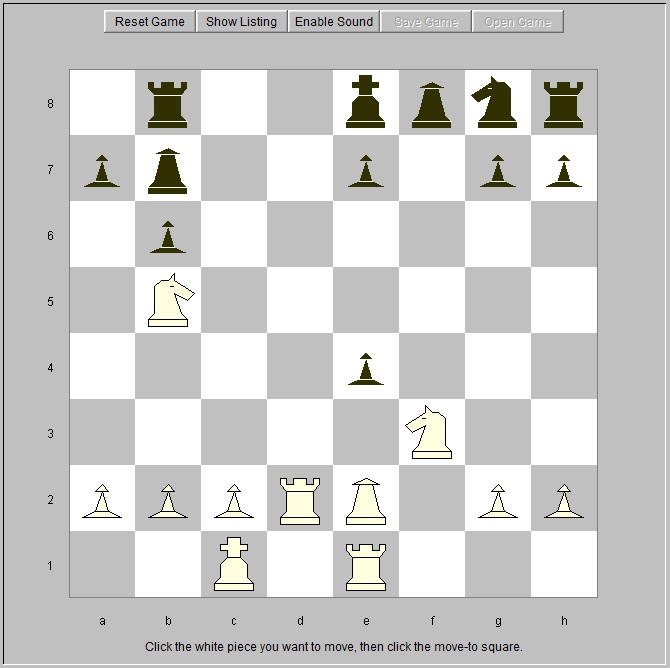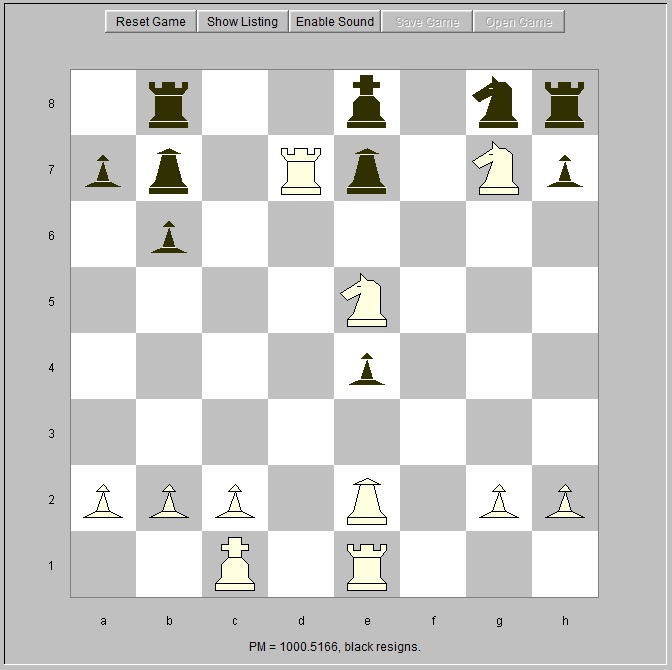
Position after move 5.
White Black 1. e4 c5 2. Nf3 Nc6 3. d4 cxd4 4. Nxd4 Nf6 5. Nc3 Qa5 Black's queen move takes us out of the opening book.

6. Nb3 Qe5 7. f4 Qe6 White must be bold here. Less agressive moves are weaker. 8. e5 b6 Too passive for black, who must immediately challenge white's pawn center. 9. Be2 Ng8 10. Be3 Rb8 White now has a definite advantage in space.

11. Qd2 f6 12. O-O-O fxe5 White sacrifices a pawn for speedier development. 13. fxe5 Nxe5 14. Bf4 d6 15. Rh1e1 Bb7

16. Bxe5 dxe5 White opens the queen file. The black queen cannot take the pawn because of Bb5+ winning the queen. 17. Nd4 Qd6 18. Nc3b5 Qd7 19. Nf3 Qxd2+ Black forces the queen trade. 20. Rxd2 e4 White pressure continues.

21. Ne5 e6 22. Rd7 Be7 White's rook move threatened mate, which is still coming. 23. Nc7+ Kf8 White has black in a classic "windmill." 24. Nxe6+ Ke8 25. Nxg7+ Black resigns. After another knight check, the bishop administers mate.

 Email Richard dot J dot Wagner at gmail dot com
Email Richard dot J dot Wagner at gmail dot com
index.html: this hand crafted, human readable HTML file was created October 1, 2020.
Last updated October 10, 2020 by
Dr. Rick Wagner. Text and images Copyright © 2020, all rights reserved.